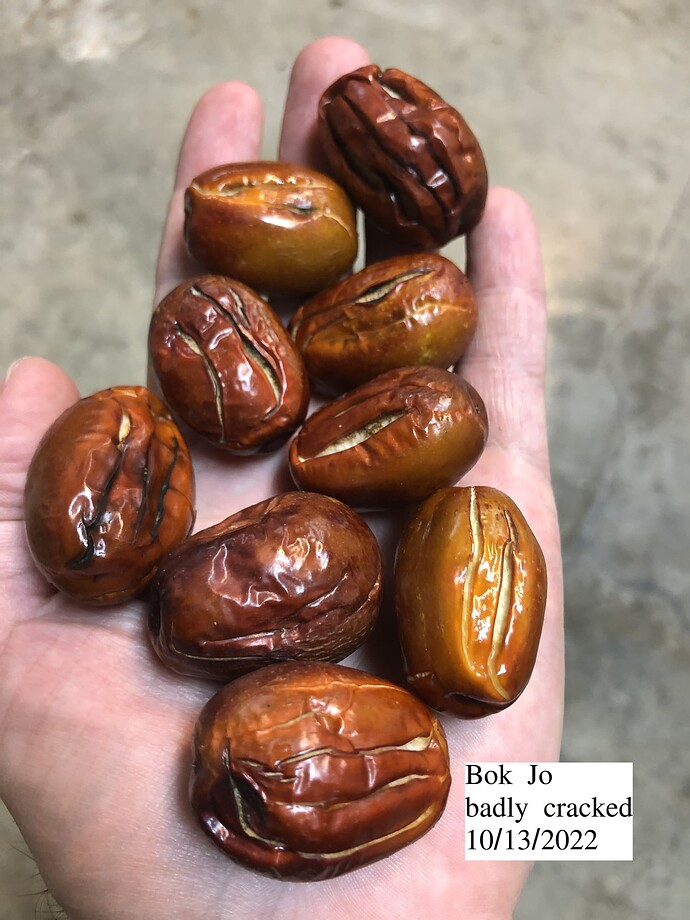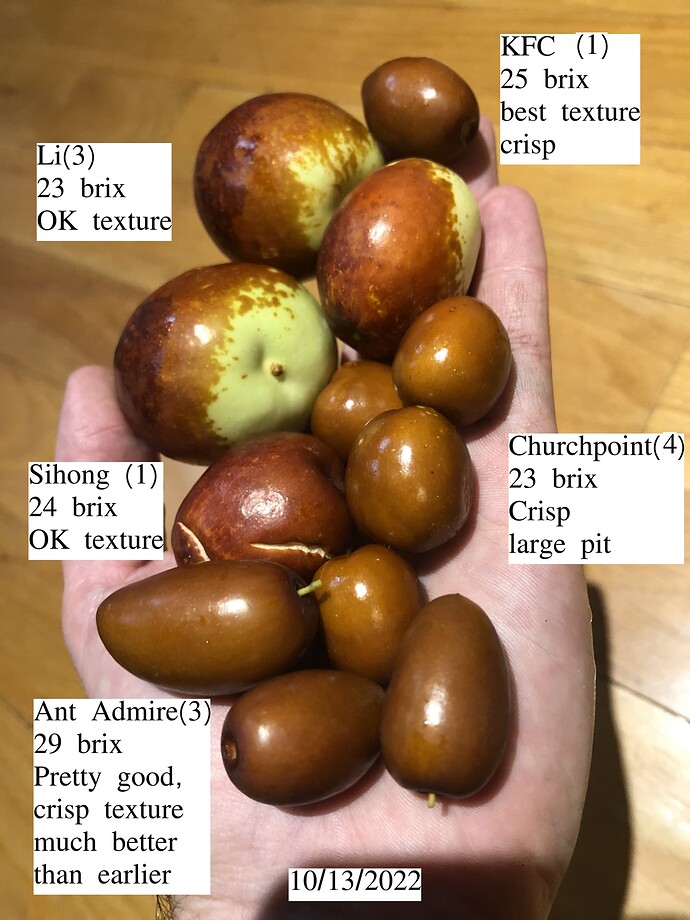I’ve only been growing them for about 10 years, but I haven’t had to deal with excessive shade and deer (mostly). Your deer problem sounds bad enough that I’d be camping out with an air rifle…
I’ve been planting jujube at a number of different sites over the last few years and there is a very wide range in terms of the success:
A site where everything grows very well → 40+ pounds (last 2 weeks) from the 3 trees planted in 2019
Another site where it is a bit dry → about a dozen tiny fruit from 6 trees planted in 2018
At least the trees at the 2nd site are growing now that I’ve been watering them every week or so during the summer. The first site only got watered twice all summer and I don’t think I’d watered it at all in past years.
From what I’ve seen, if a property has a nice lawn (without any fertilizer or watering), then the jujubes will do very well. Patchy yellow lawns will be more of a challenge.
And as Scott noted, deer are very very bad. I tried growing jujube at a couple properties (which I thankfully later sold) where there were a lot of deer. None survived the first year.
I think that is generally true, but a lot depends on the cultivar and how close the rain is to ripening. Sugar Cane and Xu Zhou both do badly with it. If someone decides to sell the fruit (something I’ve been forced to consider recently), what to do with cracked fruit is a question to deal with. Roger Meyers used to sell the ones that cracked as dried fruit. I’m not sure that would work here, unless you are on top of things. Even then, you could end up with fruit flies, etc. I’m actually getting ready to start separating the cracked Bok Jo and may give them a few hours in the oven at 180F to kill any fruit flies which seem interested in cracked fruit.
While it was a problem in the past, it hasn’t been an issue this year for me. Part of it is the older trees, but I think the weather was just much more conducive.
This is a bit preliminary, as I am still yet to taste ripe fruit from a few of the varieties this year that I expect could be on the list (Dong and Sandia), but here are my top 10 for taste. But taste is subjective and I think reasonable people could disagree about the order of the top 5. And that is for the fruit as grown in my area. If you grow it in other parts of the country, the whole list could change.
1- Honey Jar
2- Mei Mi*
3- Sugar Cane
4- Black Sea
5- Fuicuimi
6- Confetti*
7- Coco
8- KFC*
9- BV1 Seedling*
10-Massandra/Maya
*- small sample
In terms of production, I think the list would be as follows, with the top 3 being pretty close. I might include Autumn Beauty, in sunny years, as I had a massive production jump in almost all my Autumn Beauty trees this year. Same thing for Chico. But, I’m not sure if I can expect the same sort of production in a year without the inordinate amount of sunny days.
1- Bok Jo
2- Honey Jar
3- Xu Zhou
4- Sugar Cane
5- Black Sea
6- Confetti
7- Heitian Jade*
8- So
9- Massandra
10- Dae Sol Jo
So, I don’t think you’d go wrong with Honey Jar, Sugar Cane (cracks a lot if it rains close to harvest), or Black Sea. Fuicuimi could eventually join them, as quality was good and one tree had a massive harvest. But the original tree (from which the big harvest branch was grafted) has continued to have little production.
I’m not really thrilled with any of the large fruited varieties. None have as good of texture as the top 5 (or even really any of the top 10…). This includes Li, Da Bai Ling, Autumn Beauty, Shanxi Li, Dae Sol Jo, Redlands, and Sihong. But, at their best, they may be able to match up to varieties in the 15-20 range (out of maybe 50). I’d give Dae Sol Jo the nod based on production. It also doesn’t seem quite as sensitive to cracking as some of the others. I picked several pounds of it in the rain today and only had a few culls, though I think there were maybe 20% culls in the batch from yesterday (still better than the Shanxi Li).







